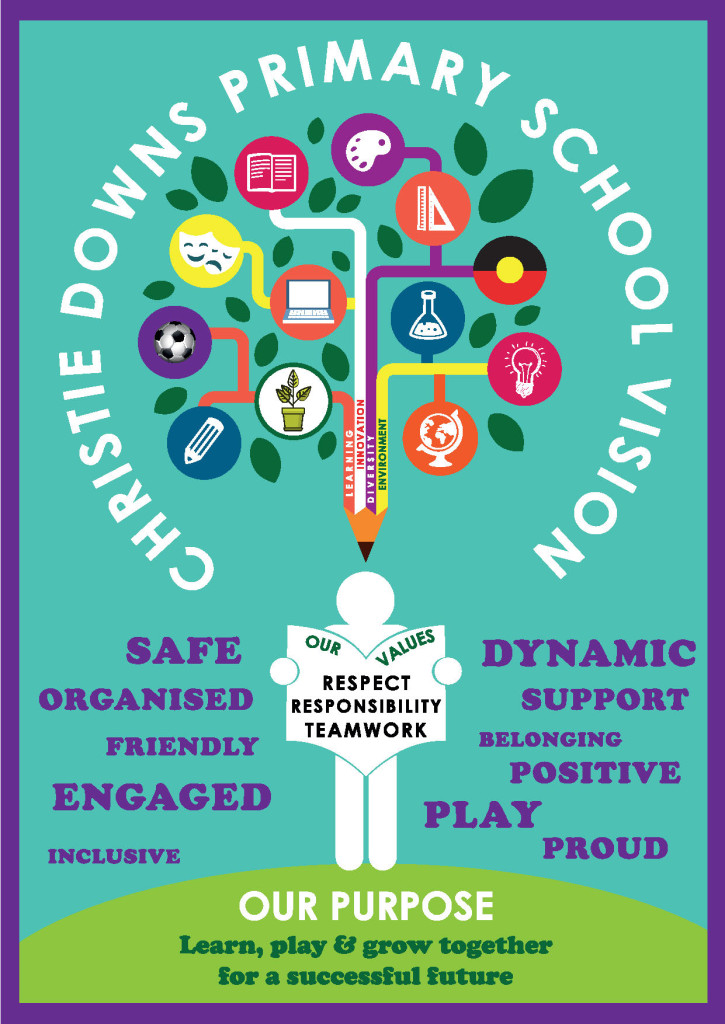The importance of shared vision
At its simplest level, a shared vision is the answer to the question,
“What do we want to create?”
Peter Senge, 1990, The Fifth Discipline, p206.
A shared vision is a mutual agreement as to the desired future state key stakeholders are working together to create. It helps to align effort, optimise contribution, and to maximise organisational performance and improvement.
Many organisation improvement models recognise the importance of establishing a shared vision. The National School Improvement Tool (ACER 2012) describes the need for; ‘an explicit improvement agenda’. The Australia Business Excellence Framework (SAI Global 2011) defines an excellent organisation as one that; ‘defines its purpose, vision and values for organisational success and ensures it is understood and applied across the organisation’.
How to create shared vision
So, if stakeholder commitment to a shared vision of excellence is critical to organisational wellbeing, how do we make it happen?
Christie Downs Primary School in South Australia has done so – to great effect! The school, of 270 students, includes 90 learners with special needs supported by an integrated Disability Unit. The current school was established four years ago through the merging of two sites, an existing primary and special school. Two different cultures and organisations needed to come together to work as one. The school engaged key stakeholders in creating a shared school vision. The vision would also inform the new school’s four-year strategic plan.
Every student and staff member took part in at least one of a series of workshops to provide their ideas. Parents, families and other community members were invited to attend either a student or after hours workshop to have their say. Students with special needs were interviewed using creative one-on-one techniques that gave them a ‘voice’. Stakeholder input was then collated and a vision drafted by a team comprising students, parents and staff. Students were allowed to lead the team to ensure the crafting of a simple, jargon-free, to-the-point guiding statement. The resulting draft was communicated to all stakeholders, agreed, and used to inform the school strategic plan.
The vision has guided improvement activity and decision-making across the school for the last four years. Leadership and staff attribute the positive culture the school enjoys today to the ownership and commitment generated through this visioning process.
Earlier this year, the fourth in the school’s planning cycle, stakeholders were invited to reflect on achievements and again have input to the school vision to inform the next strategic plan. A refined school purpose, values and behaviours, and graduate profile were also agreed. The process was very similar to that used four years previously with all students, staff and families inputting their ideas. However, this time the school team (again comprising students, parents and staff) chose to summarise and communicate the revised school direction by way of an image: that of a tree (pictured below).

All stakeholders are really excited about their tree metaphor! The tree roots are the school’s purpose. The supporting trunk of the tree are the key elements of the school vision – ‘learning, innovation, diversity, and environment’, these underpin the strategies of the school plan. The values of the school are in the hands of the stakeholder who stands beneath the tree branches and leaves – the graduate profile – the skills and capacities, attitudes and behaviours developed by the students of the school.
Congratulations Christie Downs!
So what is different about this approach?
This collaborative process:
- involves all key stakeholders of the school community – everyone has a ‘voice’
- celebrates diversity, allowing for a richness of ideas to flourish (this is not possible when only a few in the organisation are involved)
- builds shared understanding, ownership and commitment.
To learn more about creating shared vision…
Purchase a QLA System Mapping Guide
Read our forthcoming book ‘Improving Learning: A how to guide for school improvement’.
